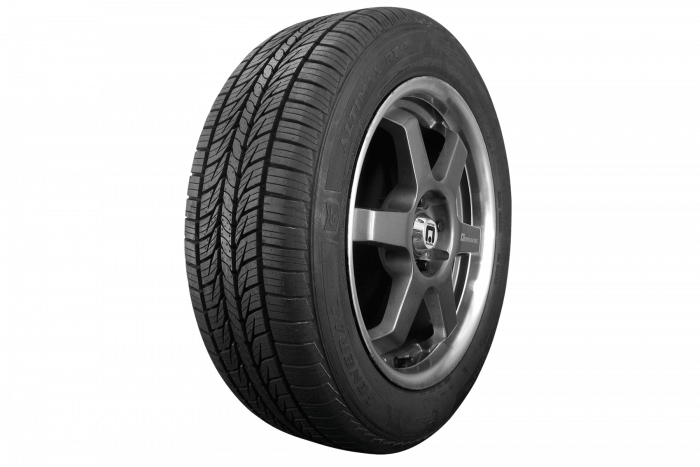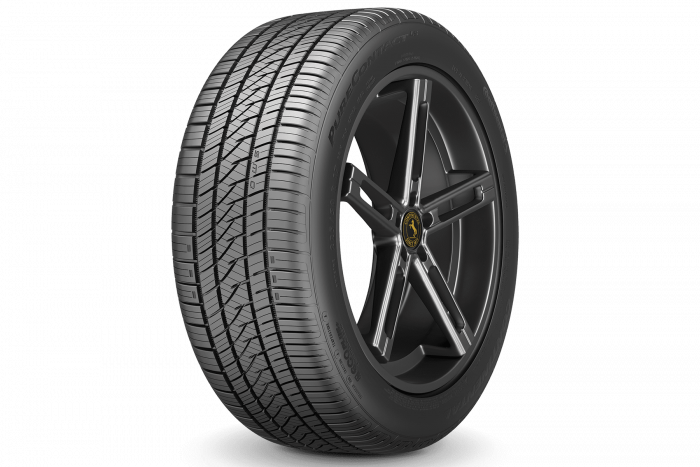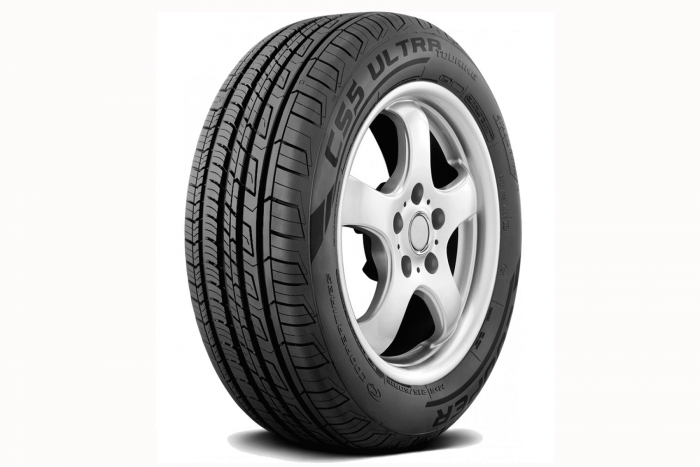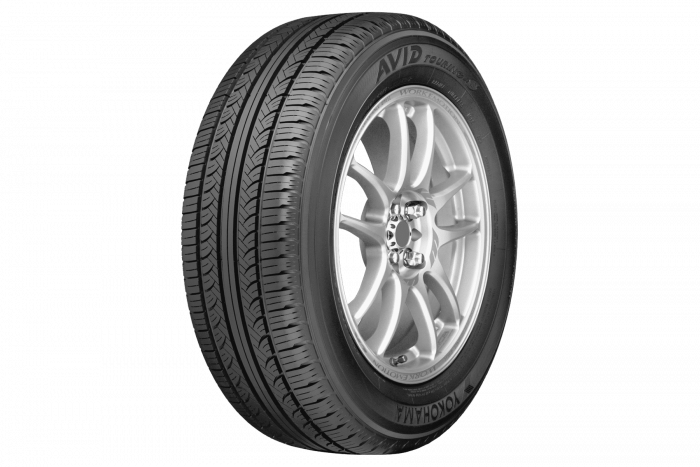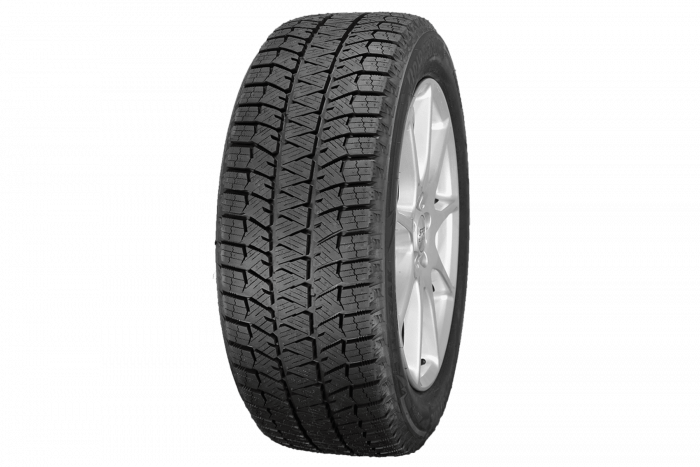If you want a powerful and fast vehicle but also don’t want to overpay – you buy Honda Accord. It’s exceedingly popular throughout the world, and especially in the US. They are bought in thousand every year, although not all people know what they want to wear on their newly-bought monsters.

Accord is a moderate vehicle. You really don’t want ultra-performance treads on it, but a decent touring solution would do nicely. The car is strong enough to benefit from sturdy, reliable and responsive all-season rubbers. If you agree with this statement, we prepared a list of candidates that fit these criteria.
Michelin Defender T+H
Upsides:
- Excellent handling;
- Superb grip in dry and wet;
- No excess noise;
- Durability
Downsides:
- Expense
This tire is a typical Defender – it’s efficient on wet land, handles very well, doesn’t produce too much noise and costs more than usual. If you’re willing to slightly overpay for a versatile and efficient tread, that’s going to be one of the key candidates.
Defenders are commonly good against hydroplaning, which isn’t to say they aren’t as good in dry – in fact, they are. Importantly, however, these treads also handle better than most Michelins (thanks to the balanced shoulders and plenty of contact area). But do mind that these treads come at a slightly higher price than usual.
They will serve long enough, though – the expected treadlife is 130.000 km.
General Altimax RT43
Upsides:
- Fine summer performance;
- Decent handling;
- Comfort
Downsides:
- None
Altimax RT43 is an entry-level tread. There’s nothing extreme about it – it’s efficient on dry and wet land, handles with enough response and you don’t have to expect a bumpy ride with these treads on. Dry traction is superb, while the hydroplaning is sufficiently neutralized by the siping all across the tread.
They’ll also be enough in winter if the snow isn’t deep enough. Just don’t get excited – RT43 is a moderate solution, but not a panacea in any sense. Fortunately, the treadlife doesn’t disappoint either – it’s about 120.000 km on average.
Continental PureContact
Upsides:
- Awesome grip in dry and wet;
- Responsiveness;
- General comfort;
- Durability
Downsides:
- None
Continental doesn’t often produce bad tires, and PureContact is one of the better Conti options when it comes to grip and handling. They are good enough in dry, of course, but it’s on wet ground where they still the show. Their wet performance is outstanding, which is perfect for long-distance trips when you can’t predict the weather.
They are also comfortable, quiet and not hazardous for the environment – all very important qualities for a usual Honda driver. And, naturally, the treads are going to live for at least 110.000 km – a healthy number, overall.
Continental PureContact LS
Upsides:
- Superb grip in wet;
- Great grip in dry;
- Great grip in snow;
- Smoothness and quietness;
- Durability
Downsides:
- None
PureContact LS has been developed with the same techniques as PureContact – for instance, they added a lot of silane and polymers to make the treads more lasting and the grip tighter. That said, LS variant is even better.
It’s supposed to be an all-season model. So, in contrast to its predecessor, it actually holds well in snow and even on ice. Moreover, thanks to the well-balanced grooving, the wet traction is even more miraculous this time. Everything else didn’t deteriorate either, including the durability and the comfort.
Cooper CS5 Ultra Touring
Upsides:
- Superior handling and grip in dry;
- Decent traction in wet;
- Fantastic responsiveness
Downsides:
- Sub-par durability
CS5 is a bargain if what you need is a versatile solution with the outstanding response wherever you go. Cooper banked heavily on summer grip this time. Interlocked grooving made sure the hydroplaning is reduced to nothing, while also not forgetting about the biting edge for traction.
Overall, we got a stable tread that sticks to the road like glue. It’s not very effective in snow, mind you – it’s not a good candidate for harsh winters. Another common problem is the lack of durability. 80.000 km of treadlife is a good enough number, but it could be much better.
Michelin Premier AS
Upsides:
- Excellent grip in summer;
- Excellent grip in winter;
- Outstanding responsiveness;
- Noiselessness
Downsides:
- None
We are now talking about the big leagues of quality. Premier AS is an ultimate all-season option – the tires are responsive and controllable under all weather conditions, winter and summer. And, as usual, most of the time they’ll be smooth as a wind and just as noiseless.
The reason why these tires don’t cost more than Honda itself is because they aren’t as sturdy, and they’ll pop after just 90.000 km. It’s not a shockingly low number, but there are many all-season candidates with much longer lifespans.
Yokohama AVID Touring-S
Upsides:
- Great handling;
- Decent dry and wet grip;
- No excess noise
Downsides:
- Average longevity;
- Poor snow grip
AVID Touring-S is in the lower echelons of what still can be considered quality touring tires. The most noticeable thing about this treads is the excessive cutting they received. It’s one of the reasons why this tire is so efficient at obeying your commands, as well as gripping the wet ground (less hydroplaning and all).
That said, they are pretty grippy overall – except for the winter. If the snow is anywhere thicker than a shoe sole level, you’ll suffer badly. They are also just average in terms of lifespan – just 100.000 km to go. But at least the price is low enough to make it all into a real bargain.
Goodyear Assurance WeatherReady
Upsides:
- Superior snow handling;
- Great wet traction;
- Quiet
Downsides:
- Average longevity
Assurance family is full of interesting combinations. This one is a touring version meant for all-season use. Although it’s not particularly great in summer, these treads somehow shine in precarious damp and snowy environments. In snow, even thick snow, they perform very well.
It’s partially because these treads are grooved and sipes into an optimized pattern. It’s great for digging through snow or evacuating water, but the pretty standard grip-wise. Now, like many neat touring tires, this one is almost noiseless (even in snow) and smooth. The lifespan could be better (just 90.000 km), but it could also be worse.
Bridgestone Potenza RE980AS
Upsides:
- Flawless grip;
- Great hydroplaning protection;
- Quiet enough
Downsides:
- Fast wear;
- Inferior comfort
This touring tire is a special case. It’s actually closer to the sports models, with all the associated flaws and merits. It’s suitable for higher speeds – the grip and responsiveness won’t deteriorate no matter how fast you go. It applies even to snow, although you shouldn’t be too excited to race around in winter.
At the same time, however, it won’t be an especially comfortable ride. It’s as expected, given the tire was designed to be a bit more sporty. Because of the same reasons, it also wears off faster than usual – with only 80.000 km of treadlife.
Bridgestone Turanza QuietTrack
Upsides:
- Superb control;
- Outstanding grip in dry, wet and snow;
- No excess noise;
- Smooth riding;
- Durable
Downsides:
- Expense
Turanza series is a bunch of efficient highway tires. They are fit for long rides at a high speed, owing to their superior grip and smoothness. You won’t feel or hear a thing on the road, while the tire responsiveness would be astounding.
It’s also an all-season tire, and a fairly good one at that. These tires are pretty efficient in all weather types, except the extreme ones, such as rain storm or when the thick ice covers the asphalt. In addition, their lifespan is amongst the best in this list – with almost 130,000 km of anticipated workload.
Unfortunately, all these pleasant upsides come at a greater cost than usual.
Bridgestone Blizzak WS90
Upsides:
- Outstanding winter traction;
- Great dry and wet grip;
- Superior handling in all situations
Downsides:
- Durability unclear
If you want extra grip for your Honda, and if what you cherish specifically is winter performance, then you Blizzak WS90 will get along fine. It’s specifically designed to provide outstanding performance in snow and ice – you can see it by the pattern. The grooving and materials used are also efficient against the hydroplaning.
The dry grip couldn’t be poor from all the stuff they added, but it pales next to the fantastic winter behavior Blizzak family is generally known for. You also don’t need to worry about handling – it’s superb under any circumstances. The only real drawback these have is the unclear longevity – there’s no warranty, you see.
They are still supposed to be strong – buyers sometimes complain about the Blizzaks, but not in this sense.
Michelin X-Ice Xi3
Upsides:
- Perfect winter traction;
- Decent dry and wet performance
Downsides:
- Fast to wear off
X-Ice Xi3 is just an extreme solution if you don’t care about anything else except winter performance. Handling in wet and dry are good enough, but it’s for the flawless winter control that people purchase these treads. There’s really nothing else to them – just outstanding winter behavior.
On a negative note, they are the least durable tires in this least. The warranty states they’ll last for about 60.000 km. If you’re careful, they’ll live for longer, but the fact remains – they are flimsier than others in the category.
Michelin Pilot Sport AS
Upsides:
- Awesome dry and wet performance;
- Fantastic responsiveness;
- Great handling in snow;
- Comfortable
Downsides:
- Not too lasting
Pilot Sport AS is another sport-inspired touring tire. It’s actually often put into the ultra-performance category, because it allows you to speed across the road regardless of the weather above or below. The handling and traction are going to stay fantastic, even in deep snow.
They are also comfortable enough, but don’t expect a vacation tour. Generally speaking, the upsides and downsides are as expected from a sporty tire. The lifespan is projected to only be 75.000, for instance – which is still pretty good, even for an UHP tread such as this.
Sumitomo HTR AS P02
Upsides:
- Superb responsiveness;
- Great wet and dry traction;
- Quiet;
- Affordable
Downsides:
- Bad in snow
This Sumitomo option is a good middle ground between sporty candidates and standard touring solutions. It handles well, provides awesome performance in wet and dry environment. Unlike the sports tires, it’s quiet, long-lasting and affordable.
Similarly to them, it’ll retain its responsiveness and handling even at high speeds. That said, you shouldn’t test them to their limits, because this one is still considered rather cheap compared to the other sports models. The longevity, however, is surprisingly good – Sumitomo promise as much as 100.000 km on these.


